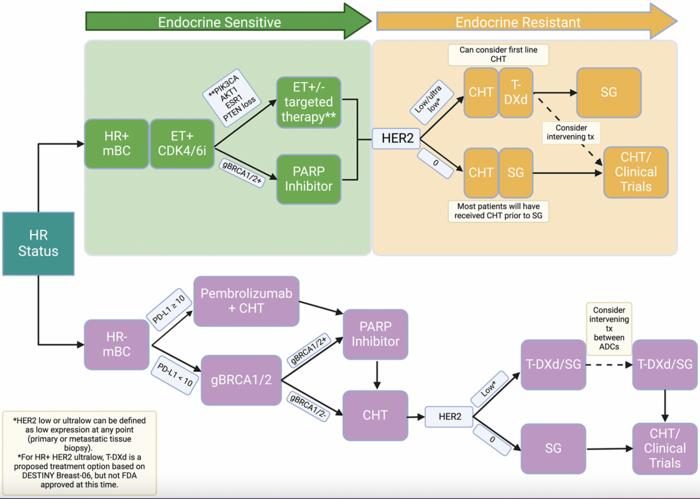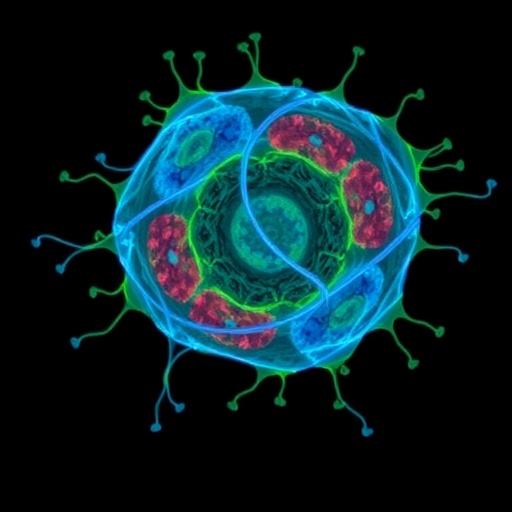Human epidermal growth factor receptor 2 (HER2)-low breast cancer is emerging as a significant clinical subtype in oncology, challenging the long-established binary classification of breast cancer into HER2-positive and HER2-negative categories. This novel classification is underpinned by recent advancements in targeted therapies and reveals potential treatment options for patients previously deemed ineligible for HER2-targeted treatments. The evolving understanding of HER2-low breast cancer is set to redefine patient management strategies, offering opportunities for personalized treatments that are representative of the ongoing shift in oncology.
Traditionally, breast cancer has been placed into two main types based on HER2 expression levels; HER2-positive cancers exhibit high levels of this protein, while HER2-negative cancers are characterized by its absence. The discovery of HER2-low breast cancer—a classification that captures tumors with lower levels of HER2 expression—signals a paradigm shift. Understanding this new classification has immediate clinical implications, particularly with the advent of new therapeutic agents designed to target HER2, including innovative antibody-drug conjugates (ADCs). These therapies show promise for patients who were previously non-eligible for HER2-based treatments due to insufficient protein expression.
The introduction of trastuzumab deruxtecan, a novel ADC, has been pivotal in changing the therapeutic landscape for patients with HER2-low breast cancer. This drug, which combines a HER2-targeting antibody with a cytotoxic agent, has demonstrated a remarkable capacity to target tumors with low HER2 expression, providing hope for improved patient outcomes. Clinical studies are shedding light on the efficacy of this treatment modality in previously overlooked populations, bridging the gap between HER2 status and effective personalized therapies.
Recent research has delved into the genomic characteristics of HER2-low breast cancer, revealing insights that may guide clinicians in choosing appropriate treatment strategies. Many HER2-low tumors are frequently found to be hormone receptor-positive (HR+), indicating responsiveness to hormonal therapies. This crucial relationship between HER2 expression and hormone receptor status underscores the importance of comprehensive genomic profiling in crafting individualized treatment plans. Furthermore, the identification of common mutations, such as PIK3CA, not only provides insight into tumor biology but could also influence the effectiveness of specific therapies, showcasing the intricate relationship between genetics and treatment response.
Nonetheless, accurate diagnosis of HER2-low breast cancer remains a challenge. Current testing methodologies for HER2 expression are variable, often leading to discrepancies between laboratories. The review emphasizes the urgent need for standardization in testing protocols to ensure consistent and reliable detection of HER2-low status. Improved detection techniques will be vital in appropriately identifying patients who stand to benefit from emerging therapies, thus optimizing treatment strategies.
As the therapeutic landscape continues to evolve, the integration of HER2-low breast cancer into current treatment algorithms is imperative. Clinicians are encouraged to incorporate HER2-low-targeted therapies into existing guidelines, adapting to the increasing personalization of cancer treatment. This approach reflects a broader trend in medicine toward tailoring therapies based on individual patient profiles, which is particularly crucial in managing metastatic disease where conventional options may fall short.
The call for continued research into HER2-low breast cancer is critical, as ongoing clinical trials explore the boundaries of this evolving classification. Researchers advocate for a more profound examination of therapeutic approaches that consider both genetic and phenotypic characteristics of tumors, broadening the horizon for patient-centric treatment options. The aim is to leverage the advances in molecular biology and technology to refine treatment pathways and maximize therapeutic efficacy, particularly in complex cases involving metastatic breast cancer.
The integration of HER2-low classification into clinical practice necessitates an educational shift for healthcare providers, who must stay abreast of the rapidly changing landscape in breast cancer treatment. Comprehensive training in the nuances of HER2-low diagnostics, along with updated clinical guidelines, will empower oncologists to make informed decisions that align with the latest evidence-based research. This mission underscores the importance of continuous professional development within the medical community as cancer treatment paradigms shift toward personalized medicine.
Ultimately, the dialogue amongst researchers, clinicians, and patients must evolve to reflect the nuanced understanding of breast cancer biology. Stakeholders in the medical field are urged to engage in proactive discussions about the implications of HER2-low classification on clinical practice and patient care. By fostering collaboration among specialists and integrating findings from ongoing research, the medical community can enhance patient outcomes and elevate the standard of care in breast cancer treatment.
In summary, the emergence of HER2-low breast cancer as a unique subtype signifies a watershed moment in oncology. The advancements in therapy and the ongoing research into this condition are emblematic of the dynamic nature of cancer treatment. With innovative approaches and a commitment to personalized medicine, the potential to significantly improve patient outcomes lies ahead, underscoring the need for continuous exploration in this vital area of health care.
The future landscape of breast cancer treatment is poised for transformation, driven by these insights into HER2-low tumors. With the promise of emerging therapies and enhanced diagnostic techniques, the medical community stands ready to offer new hope for patients navigating the complexities of their diagnoses. The journey toward optimizing care for patients with HER2-low breast cancer is just beginning, but the groundwork laid by researchers and clinicians will undoubtedly shape the future of oncology.
Subject of Research: Not applicable
Article Title: Evolving concepts in HER2-low breast cancer: Genomic insights, definitions, and treatment paradigms
News Publication Date: January 22, 2025
Web References: Oncotarget Volume 16
References: Not applicable
Image Credits: © 2025 Hensing et al.
Keywords: breast cancer, HER2-low, cancer treatment, genomics, oncology





